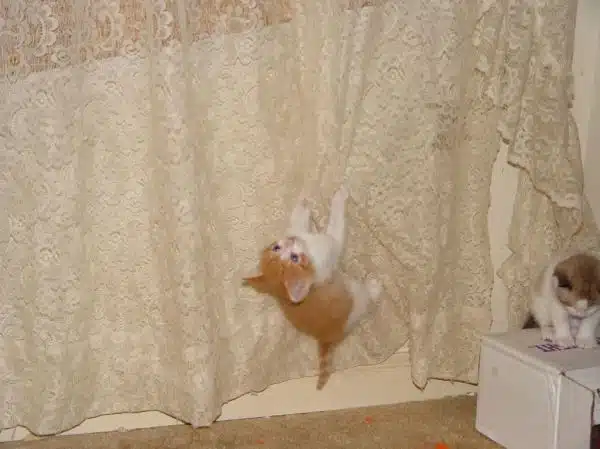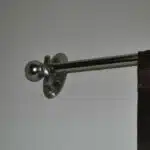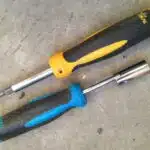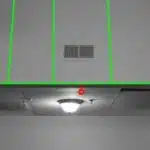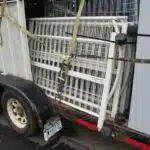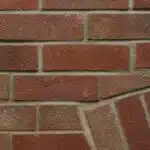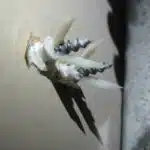As a curtain installation expert, I understand the importance of creating a cozy atmosphere in any living space. Curtains not only add aesthetic value but also provide privacy and light control. However, drilling holes into walls can be a daunting task for some homeowners or renters. Fortunately, there are alternative methods to hang curtains without drilling that are equally effective and easy to implement.
In this article, I will share some tips and tricks on how to hang curtains without drilling. Whether you live in an apartment with strict rules against making permanent changes or simply prefer to avoid the hassle of drilling holes, these methods will enable you to achieve your desired look without compromising the integrity of your walls. With a little creativity and resourcefulness, you can transform any room into a warm and inviting space while avoiding the use of power tools altogether.
Measuring Your Windows And Choosing The Right Curtains
As a curtain installation expert, you might think that the most important step in hanging curtains is drilling holes into your walls. But what if we told you that there’s a way to hang curtains without drilling? That’s right, you can decorate your windows without damaging your walls. In this guide, we’ll show you how to do just that.
Before we get started with the actual installation process, there are some things you need to consider first. Measuring your windows is key to ensuring that your curtains fit perfectly and look great. You don’t want your curtains to be too short or too long because it will ruin the flow of your room. So, grab a tape measure and take accurate measurements of your window size and height from floor to ceiling.
Next up is choosing the right curtain fabric selection for your space. There are many different types of fabrics available on the market, ranging from sheer to blackout. The type of fabric you choose will depend on the amount of natural light you want in your room and the level of privacy you need. Additionally, consider the overall style and color scheme of your room when selecting a fabric. If you have patterned furniture or wallpaper, go for solid-colored curtains or vice versa. With these measuring tips and curtain fabric selection considerations in mind, let’s move on to our next section: using tension rods for quick and easy installation.
Using Tension Rods For Quick And Easy Installation
Tension rods are an excellent alternative to drilling when it comes to hanging curtains. They are a versatile and easy-to-install solution that can be used for a variety of window sizes and styles. Tension rods work by adjusting the tension between the two ends of the rod, which allows them to stay in place without any hardware.
When choosing tension rods, it’s important to consider the materials they are made of. Most tension rods are made from metal or plastic, with metal being the more durable option. It’s also essential to pick a rod that fits your window size correctly; otherwise, it may not hold up your curtains securely. Additionally, make sure you select a rod that has enough weight capacity for your curtains’ weight.
Adjusting tension is crucial in ensuring that your curtains stay securely in place. To adjust the tension on your rod, twist the smaller end clockwise until it reaches the desired length. Then push the larger end into place against the wall or window frame. If you find that your curtain rod keeps slipping down, try increasing the tension by twisting it further clockwise before pushing it into place again.
Installing curtains without drilling doesn’t have to be complicated or stressful with tension rods as an option. By choosing high-quality materials and properly adjusting their tension, you can have beautiful window treatments without any damage to your walls or windowsills. Next up, we’ll explore another fantastic method for installing curtains without drilling: using command hooks for a secure hold.
Installing Command Hooks For A Secure Hold
Transitioning from using tension rods, let’s explore another option for hanging curtains without drilling: installing Command Hooks. These adhesive hooks can hold up to several pounds and are a great alternative for those who cannot or do not want to drill into their walls.
When it comes to installing Command Hooks, it is important to follow the instructions carefully. First, clean the surface where you plan on placing the hook and let it dry completely. Then, remove the backing from the adhesive strip and press firmly onto the surface for 30 seconds. Wait one hour before hanging any curtains or drapes.
While Command Hooks are a great solution for those who want a secure hold without drilling holes, there are also other alternative solutions available on the market. Some options include magnetic curtain rods that can be used on metal doors and windows or tension wire systems that allow for easy adjustments and versatility in hanging curtains.
As we consider different options for hanging curtains without drilling, it is important to weigh the pros and cons of each solution based on our individual needs and preferences. With a little creativity and resourcefulness, we can find the perfect solution that meets our needs while still keeping our living spaces beautiful and functional. Let’s now explore using magnetic curtain rods for metal doors and windows as another alternative solution.
Using Magnetic Curtain Rods For Metal Doors And Windows
Magnetic curtain rod alternatives are a great solution for people who do not want to drill holes in their walls or doors. These rods can be used on any metal surface, making them ideal for use on metal doors and windows. They are made with strong magnets that hold the rod in place, eliminating the need for screws or brackets.
One of the pros of using magnetic curtain rods is that they are easy to install. Unlike traditional curtain rods that require drilling, magnetic rods can be installed in seconds. This makes them perfect for renters who are not allowed to drill holes in their walls or doors. Additionally, magnetic rods are less expensive than traditional curtain rods, making them a cost-effective option.
However, there are some cons to using magnetic curtain rods. They may not be as sturdy as traditional curtain rods and may not support heavier curtains or drapes. The magnets may also become dislodged if the door or window is slammed shut too hard. Despite these drawbacks, magnetic curtain rods remain a popular alternative to drilling and offer a convenient solution for hanging curtains without damaging walls or doors.
Transition: Now that we have explored the benefits and limitations of magnetic curtain rods, let us move on to another alternative method for hanging curtains – using velcro strips.
Hanging Curtains With Velcro Strips
Did you know that the average homeowner drills over 100 holes in their walls during their lifetime? The thought of drilling holes can be daunting, especially if you’re renting or want to avoid damaging your walls. Fortunately, there are alternatives to traditional curtain hanging methods that don’t require drilling. One such alternative is using velcro strips.
Velcro strips have become a popular choice for hanging curtains without drilling, as they offer numerous benefits. For starters, they are easy to use and install, with no special tools required. Velcro strips also provide a damage-free solution for those who don’t want to leave holes or marks on their walls. Additionally, they can be easily removed and reused, making them a cost-effective option.
If you’re considering hanging your curtains with velcro strips, it’s important to note that there are other alternatives available. Some people opt for magnetic curtain rods or tension rods as another option. However, when compared to these alternatives, velcro strips offer unique benefits such as versatility in terms of where and how they can be used.
When it comes down to it, choosing the right method for hanging your curtains depends on your personal preference and circumstances. Velcro strips offer an excellent solution for those looking for a damage-free option that is easy to install and remove. In the next section, we’ll discuss utilizing adhesive strips for another damage-free solution that provides additional benefits over traditional curtain hanging methods.
Utilizing Adhesive Strips For A Damage-Free Solution
To hang curtains without drilling, adhesive strips can provide a damage-free solution. Adhesive strips are versatile and lightweight, making them an ideal alternative to traditional drilling methods. However, proper application is crucial to ensure they hold up over time and do not cause damage when removing.
Before applying adhesive strips, make sure the wall surface is clean and dry. Use rubbing alcohol or a mild soap solution to remove any dirt or debris. Additionally, double-check the weight limit of the adhesive strip package to ensure it can support your curtain size and weight. When applying the strip, press firmly for at least 30 seconds to ensure a secure bond.
When it’s time to remove the strips, gently pull down on the tab while holding the base of the strip close to the wall. Avoid pulling straight out from the wall as this may cause damage. If you encounter resistance when removing the strip, use dental floss or fishing line to cut through the adhesive instead of pulling harder. Alternatively, suction cups or clip rings can also be used as alternatives to adhesive strips for hanging curtains without drilling.
Moving away from using adhesive strips, another option for hanging curtains without drilling is utilizing cable wires and clamps. This method involves mounting two cables parallel to each other across your window frame and securing them with clamps. The curtains are then hung from these cables using small hooks or clips. This option provides a sleek and modern look while also allowing for adjustable curtain height and width.
Hanging Curtains With Cable Wires And Clamps
- The first step in hanging curtains without drilling is to install the cable wire system. This should be done by connecting the wall mounts securely to the wall and then attaching the corresponding mounting cables to the mount.
- Once the cable wires are in place, select clamps that are suitable for the weight and material of the curtains.
- The clamps should then be attached to the cables and the curtains hung.
- To ensure the curtains are properly suspended, adjust the tension of the cables accordingly.
- To secure the curtains in place, use additional clamps at each end of the cable wires.
- Finally, the curtains should be tested to ensure the cable wire system is providing adequate support.
Cable Wire Installation
Cable wire installation is one of the most popular wireless options for hanging curtains without drilling. It involves using thin and durable cables to support the weight of the curtains. This method is ideal for people who are looking for cost-effective solutions that require little to no hardware.
The first step in cable wire installation is to measure the length of your window and cut the cable wire accordingly. Then, attach a clamp to each end of the cable and secure it onto either side of your window frame. Once this is done, simply clip on your curtain rings or hooks onto the cable wire and adjust them as needed until you achieve your desired look.
Overall, cable wire installation offers an affordable and simple solution for those looking to hang curtains without drilling. With proper measurements and a few clamps, anyone can easily create a clean and polished look in their home without breaking the bank. So why not give it a try? Your windows will thank you!
Clamp Selection
When it comes to hanging curtains with cable wires, selecting the right clamps is crucial for ensuring a secure and stable installation. The first thing to consider when choosing clamps is their size. It’s important to select clamps that are the appropriate size for your cable wire, as using ones that are too small or large can compromise the integrity of the installation. Typically, clamp sizes range from 1/16 inch to 3/8 inch, so be sure to measure your cable wire diameter before making a purchase.
Aside from clamp size, another factor to consider is the material they are made of. Clamps can be constructed from various materials such as plastic, metal or rubber, each offering different levels of durability and grip. For instance, plastic clamps may not provide as much strength as metal ones but may be more affordable. On the other hand, metal clamps tend to be sturdier but may scratch or damage your window frame if not used properly.
Ultimately, selecting the right clamps for your cable wire installation requires careful consideration of both size and material. By taking these factors into account and choosing high-quality clamps that are suited for your specific needs, you can ensure a successful and long-lasting curtain hanging experience without drilling any holes in your walls or windowsills!
Mounting And Adjusting
When it comes to hanging curtains with cable wires and clamps, selecting the right size and material of the clamps is important for ensuring a secure installation. However, mounting and adjusting the cable wires themselves are equally crucial in achieving a smooth and stable curtain hanging experience.
One option for mounting the cable wires is using tension rods that can be adjusted to fit inside your window frame. This method is ideal for those who do not want to drill or damage their walls or windowsills. Tension rods come in various sizes and materials, so make sure to choose one that fits securely in your window frame.
However, some windows may have uneven surfaces or frames that make it difficult for tension rods to stay in place. In this case, using cable wire with clamps may be a better solution. Adjusting the tension of the cable wire can also be done by simply turning the clamp clockwise or counterclockwise until you achieve the desired tightness. With proper adjustment, your curtains will hang smoothly without sagging or drooping over time.
Installing A Curtain Track System
Ah, the joys of a well-dressed window! Curtains bring warmth and style to any room, but what if you can’t drill holes in your walls? Fear not, for installing a curtain track system is here to save the day. This innovative solution allows you to hang curtains without drilling, making it perfect for renters or those who simply don’t want to commit to permanent fixtures.
The first step in installing a curtain track system is choosing the right one for your needs. There are different types of systems available, each with its own set of benefits. For example, some tracks come with gliders that allow for smooth movement of the curtains while others have ball bearings that provide extra durability. It’s important to consider the weight of your curtains as well as the size of your windows when selecting a track system.
Once you’ve selected the right track system, it’s time to install it on your wall. The process will vary depending on what type of wall you have. For drywall or plaster walls, use toggle bolts or anchors designed specifically for these materials. If you have concrete or brick walls, use masonry screws and a hammer drill. Remember to measure carefully and mark where you want your track system to go before starting installation.
Transitioning into using a curtain stand for a portable option, this method is great if you’re looking for an easy-to-move option that doesn’t require any installation. Simply place the stand where you want it and attach your curtains using clips or hooks. Keep in mind that this method may not be as sturdy as a track system and could tip over if bumped too hard. However, it’s perfect for temporary situations such as outdoor events or trade shows where you need privacy or decoration without committing to permanent fixtures.
Using A Curtain Stand For A Portable Option
Portable options for hanging curtains without drilling are becoming increasingly popular among homeowners who want a cost-effective solution that does not require creating permanent holes in their walls. One such option is using a curtain stand, which can be easily assembled and disassembled when needed. These stands come in different sizes and materials, including metal and plastic, to suit different types of curtains.
Curtain stands offer an excellent alternative to traditional curtain rods because they do not require installation or hardware. You simply slide your curtains onto the rod and place the stand on the floor or tabletop where you want it. This makes them ideal for renters who cannot alter their living spaces or those who frequently move from one place to another.
Portable options like curtain stands are also cost-effective solutions for those who want to save money on home decor. Unlike permanent fixtures, they can be reused in different parts of your home or even outside, giving you more value for your investment. Additionally, they come in various styles and colors to complement your interior design style.
Transitioning into the next section about creating a DIY curtain rod with PVC pipes, you may be surprised how easy it is to make your own customized curtain rod without breaking the bank. With just a few tools and materials, you can create a unique piece that fits perfectly with your decor style. Let’s explore this option further!
Creating A Diy Curtain Rod With Pvc Pipes
One alternative to drilling holes in your walls for curtain rod installation is creating a DIY curtain rod with PVC pipes. Not only is this method cost-effective, but it also allows you to customize the length and color of your curtain rod to fit your specific needs.
To create a PVC pipe curtain rod, you will need to measure the width of your window and purchase an appropriate length of PVC pipe. Next, cut the PVC pipe to size using a saw or pipe cutter. Then, sand down any rough edges and spray paint the PVC pipe in your desired color. Finally, attach finials or end caps to each end of the PVC pipe using adhesive.
If you want to further enhance the look of your DIY curtain rod, consider creating matching tiebacks out of leftover PVC pipes or other materials such as rope or ribbon. This not only adds a decorative touch but also provides a functional way to keep your curtains open during the day.
- Consider adding decorative elements such as spray-painted designs or washi tape for extra flair.
- Use different sizes or shapes of PVC pipes for a unique twist on traditional curtain rods.
- Experiment with different materials for end caps such as wooden balls or resin shapes.
- Don’t be afraid to mix and match colors and patterns with your curtains and tiebacks.
- Get creative with tieback designs by braiding multiple materials together or adding tassels.
With these steps, creating a DIY curtain rod using PVC pipes can be an easy and fun project that adds functionality and style to any space without damaging walls. However, if you are not interested in making your own curtain rod, there are still alternative options available such as using tension rods or magnetic rods. Alternatively, if you prefer not to use any type of rod at all, consider using DIY curtain tiebacks as an alternative way to hold curtains in place.
Hanging Curtains With Suction Cups
After creating your own curtain rod with PVC pipes, you may want to consider different ways to hang your curtains without drilling. One option is using suction cups, which can be a convenient and easy alternative to traditional hardware. Suction cup alternatives are also ideal for renters who cannot drill holes into walls or those who simply do not want to damage their walls.
Suction cups are designed to create a vacuum seal between the cup and the surface it is attached to, providing a secure hold for lightweight objects such as curtains. However, suction cups may not be suitable for heavy or bulky curtains that require additional support. The strength of the suction cup also depends on the type of surface it is attached to – smooth surfaces like glass or tile tend to work better than textured surfaces like brick or stucco.
Despite their limitations, there are many pros to using suction cups for hanging curtains. They are affordable and widely available in hardware stores and online retailers. Suction cups are also easy to install and remove without leaving any damage behind. If you prefer a minimalist look without visible hardware, suction cups can provide a sleek and modern solution for hanging your curtains.
If you’re looking for another modern way to hang your curtains without drilling, consider using clip rings. Clip rings attach directly onto the fabric of the curtain panels, allowing them to slide easily onto a curtain rod without any additional hardware necessary. This method creates a clean and contemporary look while still providing functionality for opening and closing your curtains. With clip rings, you can easily achieve a designer look without breaking the bank or damaging your walls.
Using Clip Rings For A Modern Look
Clip rings are available in a variety of materials that range from plastic to metal, making them a versatile and stylish choice for hanging curtains. Installation of clip rings is relatively straightforward, as the rings fit directly onto the curtain rod with a simple click. When selecting clip rings, it is important to consider the curtain rod size, as the clips are designed to fit specific rod diameters. Additionally, the number of clip rings used should be proportional to the width of the curtain to ensure a balanced and aesthetically pleasing look.
Types Of Clip Rings
When it comes to giving your windows a modern look, clip rings are a great option. These small rings attach to the top of your curtains and allow you to easily hang them without drilling holes into your walls. However, not all clip rings are created equal. There are several types of clip rings that can help achieve different decorating styles and provide varying levels of durability.
One popular type of clip ring is the metal ring with clips attached. This style is simple and classic, making it a great match for traditional or industrial decor. However, they can be prone to rust over time if not properly cared for. To keep your metal clip rings looking their best, wipe them down with a damp cloth every few weeks.
Another type of clip ring is the plastic ring with hooks attached. These rings often come in a variety of colors, making them perfect for adding a pop of color to your window treatments. They also tend to be more lightweight than metal rings, which can make them easier to use if you have heavy curtains. To clean plastic clip rings, simply wash them in warm soapy water and dry thoroughly before reusing.
No matter what type of clip ring you choose, they are an excellent way to achieve a modern look without damaging your walls with drills or screws. Just remember to regularly clean and maintain your clip rings so they stay looking their best for years to come!
Installation Of Clip Rings
When it comes to giving your windows a modern look, clip rings are an excellent option. They provide a simple and effective way to hang curtains without drilling holes into your walls. There are several clip ring styles and materials available that can help achieve different decorating styles and provide varying levels of durability.
Before installing clip rings, it’s important to choose the right style and material for your needs. For example, metal clip rings with attached clips are simple and classic, making them perfect for traditional or industrial decor. However, they require regular maintenance to prevent rusting. On the other hand, plastic clip rings with hooks attached come in a variety of colors and are more lightweight than metal rings, making them easier to use with heavier curtains.
To install clip rings, simply slide each ring onto the top of your curtain panel until you reach your desired placement. Then, attach the clips or hooks on each ring to the curtain rod. Make sure to evenly space out the rings along the length of the rod for a balanced look. With proper installation and maintenance of your chosen clip ring style and material, you can enjoy a modern window treatment that complements any decor style.
Installing A Ceiling-Mounted Curtain Rod
As the saying goes, sometimes you have to think outside of the box. When it comes to hanging curtains without drilling, one alternative option is to use a ceiling-mounted curtain rod. This method not only eliminates the need for drilling into your walls but also allows for an interesting and unique look in your space.
There are several different alternatives when it comes to ceiling mounted curtain rods. One option is a track system that can be attached directly to the ceiling and allows for curtains to slide back and forth with ease. Another option is a traditional rod that can be mounted onto brackets attached to the ceiling. Both options provide a clean and modern look while also being functional.
When using a ceiling-mounted curtain rod, it’s important to consider maximizing your space. By hanging curtains from the ceiling instead of traditional wall brackets, you can create an illusion of height in your room and make it feel more spacious. Additionally, by choosing curtains that extend from floor to ceiling, you can draw attention upward and create a focal point in your space. Overall, a ceiling-mounted curtain rod is an excellent alternative for those looking for a unique and practical way to hang curtains without drilling into their walls.
When considering ways to hang curtains without drilling, another popular option is using a tension wire system. This method involves attaching wires or cables between two points on either side of your window and then hanging your curtains from clips attached to the wire. In the next section, we will explore this method in more detail and provide tips for successfully implementing this technique in your home.
Hanging Curtains With A Tension Wire System
- Installing a tension wire system is a simple process that begins with measuring the width of the window to determine the appropriate size for the tension wire components.
- When selecting the tension wire, consideration should be given to the wall type and tension wire material, as certain walls may require a specific tension wire material to prevent damage.
- When selecting the curtains, make sure the weight of the curtains is appropriate for the tension wire system, as too heavy a curtain can damage the wall and tension wire system.
- In order to ensure a secure installation, it is important to make sure all components are securely fastened to the wall and the tension wire is properly tensioned.
Installing The Tension Wire
As a curtain installation expert, I understand the importance of properly installing a tension wire system. Although drilling may seem like the only option for hanging curtains, there are tension wire alternatives that can be just as effective. One such alternative is a tension wire system which utilizes a thin steel cable that can hold up to 20 pounds of weight. This option is perfect for those who want to avoid drilling into walls or damaging their window frames.
To install the tension wire system, begin by measuring the length of your window frame and adding an additional foot on either side. Cut the cable to this length using a pair of pliers and attach one end to the wall anchor provided with your kit. Thread the other end through each of your curtain’s grommets or clips and attach it to the opposite wall anchor. Adjust the tension until your curtains hang evenly and securely.
It’s important to note that each tension wire system has its own weight limit, so be sure not to exceed it when selecting your curtains. With proper installation and care, this alternative method can provide an easy and secure way to hang curtains without drilling into walls or causing damage to window frames.
Choosing The Right Materials
When it comes to hanging curtains with a tension wire system, choosing the right materials is essential. Not all curtains are created equal, and some may not be suitable for use with this alternative method. When selecting curtains, it’s important to consider both their weight and the type of fabric they’re made from. Heavy fabrics like velvet or thick drapes may exceed the weight limit of your tension wire system, while lightweight fabrics like sheers or cotton blends may not provide enough tension to keep them securely in place.
To avoid damage when using a tension wire system, it’s also important to choose curtains that have evenly spaced grommets or clips. Unevenly spaced grommets or clips can put uneven pressure on the cable, causing it to sag in certain areas and potentially pull away from the wall anchors. This can lead to an unbalanced and unstable installation that could result in damage or injury.
When choosing curtains for use with a tension wire system, it’s best to opt for those specifically designed for this purpose. These curtains typically have evenly spaced grommets or clips that are compatible with most tension wire systems’ standard spacing. By selecting the right materials and following proper installation techniques, you can enjoy beautiful and functional window treatments without drilling into your walls or causing damage to your window frames.
Troubleshooting Common Issues And Tips For Maintenance
Now that you have successfully installed your curtains using a tension wire system, it is important to know how to troubleshoot common issues and maintain them for long-term use. As an expert in curtain installation, I highly recommend selecting the right curtains for your space. Curtains come in various sizes, colors, and materials, so it’s essential to consider these factors before making a purchase.
When selecting curtains, ensure they are the right size for your windows. It’s best to measure the width of your window frame and add a few inches on either side for optimal coverage. Additionally, consider the length of the curtains; do you want them to touch the floor or hang just above it? Lastly, think about the material; do you prefer lightweight or heavyweight fabric? These tips will assist you in selecting curtains that complement your room’s decor.
Despite having installed your curtains correctly using a tension wire system, there are still common mistakes to avoid. One mistake is not properly securing the tension wire system onto each wall. Ensure each end of the wire is tightly secured onto its respective wall bracket by tightening each screw firmly. Another mistake is not taking into account uneven walls; this can cause one end of the tension wire system to be higher than the other end. To avoid this issue, use a leveler when installing each wall bracket.
In maintaining your newly installed curtains, remember to dust them regularly with a soft-bristled brush or vacuum attachment. Avoid washing them frequently as this can damage delicate fabrics and cause discoloration. Lastly, check on the tension wire system every few months to ensure it remains taut and secure. These tips will help prolong the lifespan of your curtains and maintain their appearance over time.
Conclusion
In conclusion, there are many ways to hang curtains without drilling that are both easy and effective. Whether you choose to use tension rods, command hooks, magnetic curtain rods, velcro strips, clip rings, ceiling-mounted rods or a tension wire system, the key is to measure your windows carefully and choose the right curtains for the job.
If you encounter any issues during installation such as slipping or sagging curtains, don’t despair. There are simple maintenance tips you can follow to keep your curtains looking their best. As an expert in curtain installation, I recommend checking the installation periodically and adjusting accordingly. With these techniques and tips in mind, you can transform any room with beautiful and functional curtains without drilling any holes.
Image Credits
- “Kitten hanging from curtain.” by Clevergrrl (featured)

